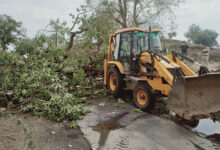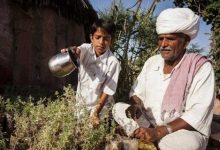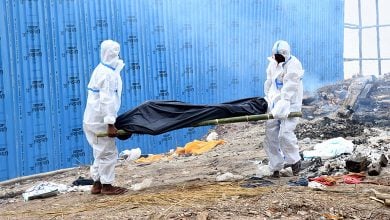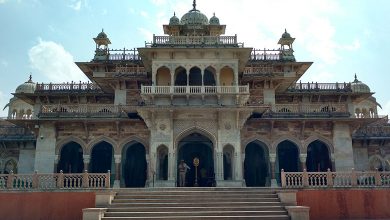No myth, Saraswati is really flowing, quenching thirst, helping farmers
The confidence of those who are now hoping to establish farming has been boosted by the peaceful river flowing underground.
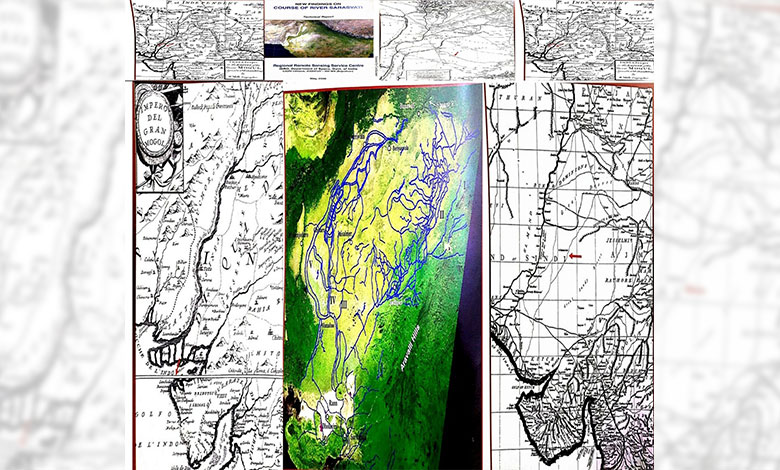
Lost and found after centuries, the Saraswati river has emerged as a boon for the dry, parched and arid zone of western Rajasthan which is now attracting the attention of people from across the world.
The silent river flowing underground is boosting the confidence of people who are now planning to bring farming here. Saraswati, for centuries, was believed to be a mythical river. However, the Vaidik Saraswati River Research Centre situated in Jodhpur worked hard to trace the Saraswati river which yielded surprising results.
In Jaisalmer, sweet and potable water was traced when its team dug around 20 wells, each 40-60 metre deep. The emergence of water in dry regions full of sand dunes boosted their belief that the Saraswati was not lost but flowing somewhere underground.
This was way back in 2002. Today, this water is being used by defence personnel serving at the border posts and the locals nearby. Earlier, the soldiers and locals had to travel for miles to fetch water. However, the situation has changed now, said Madanmohan Vyas, general secretary, Vaidik Saraswati Nadi Shodh Sansthan. He added that Dabla village near Jaisalmer has another interesting story where a jungle was being fed by a Saraswati tubewell which was dug by the Oil and Natural Gas Corp (ONGC), India’s largest oil and gas producer.
This was found as an underground fresh water reservoir after drilling a well. Buoyed by these developments, a group proposed to establish an agro-township in Jaisalmer, Phalodi and Bikaner where grains and spices will be grown. “The Saraswati water is flowing underneath in its purest form and hence the vegetation which will come up here will be the best of its kind. The innovative cooperative farming is being promoted in areas surrounding canals and water bodies,” Rajendra Pachar, managing director of the Pachar Group, told IANS.
When asked if the prospects will dwindle as it is a desert region, he was confident that the “Saraswati water will boost all prospects. We have found water at just 50 feet depth which is not the case anywhere else in Jaipur and adjoining areas,” he added. In fact, the perception of the locals about the desert areas has changed and people from Delhi, Gurugram and Noida have invested here, so we are bringing farming concepts on 250 bighas of land in different districts of Western Rajasthan, he said, adding that the Phalodi region is already sold out.
Saraswati Research Centre officials told IANS that “Rivers neither die nor dry out but either change course or else the water level goes down.” Similarly, the Saraswati was never lost but its water level went down to 100-150 feet. Even the state ground water department after five years of research concluded that there is a surplus water reserve in Jaisalmer where 30-35 water wells can be dug per square kilometre area.
As per the Central Ground Water Authority report which did a recent survey in the region, there is a capacity to build one million tubewells in eight paleo channels traced in the Rajasthan Saraswati Flow Zone. JR Sharma, a senior officer in the Indian Space Research Organisation who made an immense contribution to the research on the Saraswati, told IANS, “Once this river was called mythical. However, now the world believes that the river is a reality. Their perception has totally changed which can be seen by analysing the research papers presented in different parts of the world which are of excellent quality.”
“Rajasthan in the long run will benefit with Saraswati water as neighbouring state Haryana is working hard to explore new possibilities. It has formed the Saraswati heritage board and is now building a barrage where water will be added which might flow into the desert state. “This water might recharge the Ghaggar river and surrounding areas which will help the water table in Rajasthan get recharged too,” he added. “In fact, a few Chief Ministers decided to work together on this prospect, but the present scenario remains unknown,” he said.
Dr Vimal Soni from GWD Jodhpur, told IANS, “We did dig 21 wells a few years back out of which water from 2 wells is being used by the BSF. The water quality was good. The remaining have been handed over to the PHED department. There is a strong possibility of underground water but the vast sand dunes are a challenge as digging is difficult here.”
Madanmohan Vyas told IANS, “Our Shodh Yatra started in the 80s when Saraswati Nadi Shodh Parakalp was formed in 1983. This samiti conducted a historical survey from Adibadri, foothills of the Shivalik hills in 1985 covering Haryana, Rajasthan and Gujarat. A mini survey was conducted in 1992 covering Jodhpur, Jaisalmer, Barmer, Jalore and Sirohi with veterans from the ISRO, PHED and some universities.” “In 1995, our research centre was formed which made coordinated efforts with NASA satellite, ISRO, BARC and Ground Water Department of Rajasthan to trace the route of the Saraswati,” he added.
In fact, the world has also recognised Saraswati as the oldest map in 1760 A.D. by Bryce Collier Library Atlas depicts the Soorsuti joining the Ghaggar. The Vedas, our oldest literature, also mention the Saraswati, he said, adding the “Rajasthan canal now called Indira Gandhi canal seems to be on the same course which was once the Saraswati flow area, it has the same alignment and there is no pumping station in between. It flows from Haryana to Rajasthan till Mohangarh.
When former PM Indira Gandhi inaugurated it in 1980, one inscription on its bank referred to it as the Saraswati Rupa Rajasthan Canal,’ he added. After decoding history, literature and science, we tracked the Saraswati course via mapping. Now Thar awaits the Saraswati water in its arid region to bring back prosperity and growth in the region, said Pachar.
